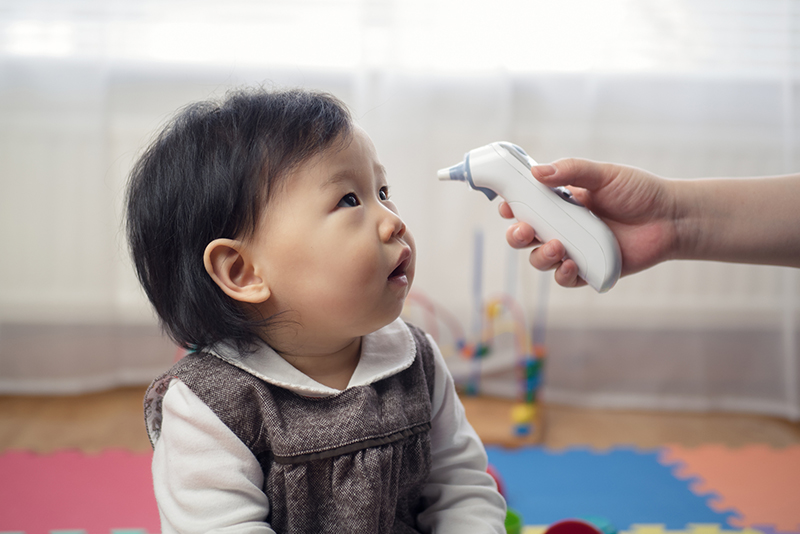Families For Life | Taking Your Child's Temperature

Symptoms of Severe Acute Respiratory Syndrome (SARS) include:
- A sudden onset of high fever (above 38˚C)
- Dry cough
- Chills and shivering
- Muscle aches
- Breathing difficulties
Since the earliest symptom of SARS is a sudden onset of high fever, this article is to enable you to take your child's temperature correctly.
Although not everyone with fever has SARS, see a doctor if your child has a fever.
Taking your child's temperature
Temperature taken at different parts of the body will vary. For example, the armpit temperature is lower than the mouth and ear temperatures.
When does your child have a fever?
Your child (below 12 years old) has a fever if:
- the armpit (axillary) temperature is over 37.2˚C
- the mouth (oral) temperature is over 37.5˚C
- the ear (tympanic) temperature is over 37.9˚C.
How do you measure your child’s body temperature?
You may use a glass thermometer, a digital thermometer or an ear (tympanic) thermometer.
Using a glass thermometer
- Wash the thermometer with soap and water before use.
- Shake the thermometer a few times to bring the level of the mercury below 35˚C.
- Only armpit reading is recommended for glass thermometer.
- Armpit reading:
- place the thermometer under the armpit
- fold your child’s arm across the chest to hold the thermometer in place
- read the temperature after 5 minutes
- Wash the thermometer with soap and water after use.
Using a digital thermometer
- Wash the area of the thermometer in contact with mouth or armpit with soap and water before use.
- Switch on the thermometer, and wait for it to be ready to register a reading.
- Both mouth and armpit readings are suitable for digital thermometer (please note the age groups specified below).
- Armpit reading (for children 7 years of age and younger):
- place the thermometer under the armpit
- fold your child’s arm across the chest to hold the thermometer in place
- the thermometer will signal/beep when the temperature display is ready for reading
- read the temperature
- Mouth reading (for children older than 7 years of age):
- place the thermometer under the tongue
- ensure your child’s lips are closed around the thermometer
- tell your child NOT to bite the thermometer
- the thermometer will signal/beep when the temperature display is ready for reading
- read the temperature
- Wash the area of the thermometer in contact with mouth or armpit with soap and water after use.
Using an ear (tympanic) thermometer
- This thermometer is suitable for children 3 years of age and older.
- Switch on the thermometer. When it is ready to register a reading, gently insert the thermometer’s earpiece in your child’s ear canal. Pull the ear gently backwards and upwards to straighten the ear canal.
- Press the activation button and hold until a reading appears. (Some models may have a beep sound when it is ready for reading.)
- Take the thermometer out and read the temperature.
Dos and don’ts when using a thermometer
Do ...
- read the manufacturer’s instructions on the proper use and the range of normal temperature readings for each type of thermometer
- wash the glass or digital thermometer with soap and water before and after use.
Don’t ...
- allow your child to bite the thermometer
- take mouth temperature within 30 minutes of your child consuming hot and cold food and drinks
- allow your child to talk when taking mouth temperature
- allow your child to move about when taking armpit temperature.
What you can do if your child has a fever
- Take your child to see a doctor.
- Give your child plenty of fluids, e.g. water, fruit juices and clear soups.
- Dress your child in light clothing.
- If your child’s fever is higher than 38.5˚C, sponge him/her with tap water and give paracetamol.
- Rest your child in a cool and well-ventilated room.
A word of caution
- Do not allow your child to go to childcare centre, nursery, kindergarten, student care centre or school if he/she has a fever.
- Check that the fever has subsided for at least 24 hours before allowing your child to go out.